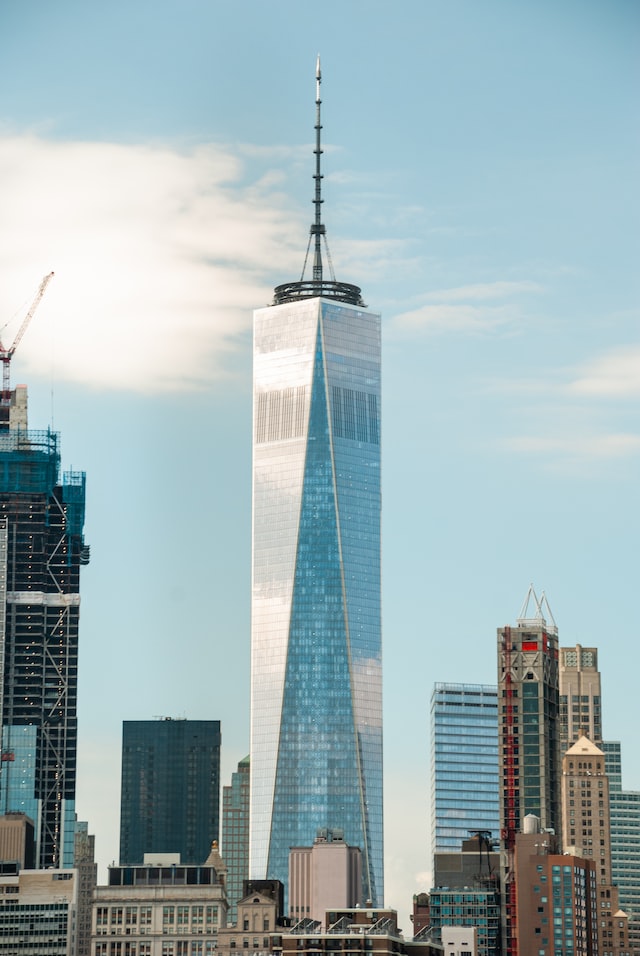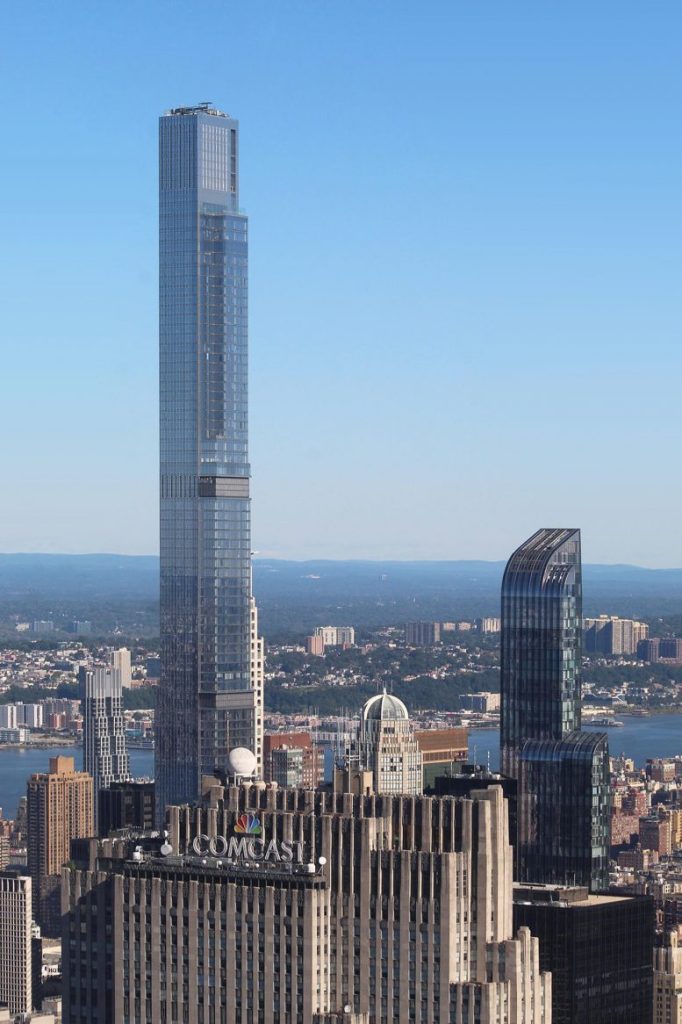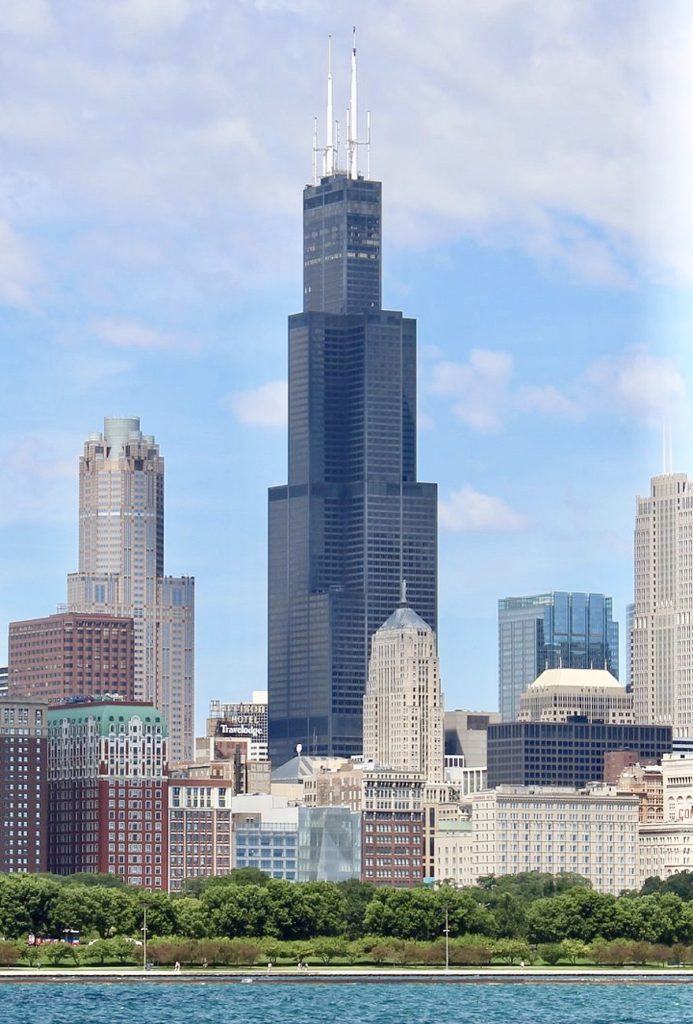The United States skyline is a living expression of the country’s architectural history, marked by ambition, innovation, and technical competence. From the early twentieth century, when steel skyscrapers first appeared in urban areas, to the present period of extremely tall buildings, the United States has always sought to push the frontiers of structural design. These towers are more than just structures; they signify advancement, cultural significance, and engineering prowess that merit appreciation and respect. These skyscrapers stand tall as a tribute to the bold imagination and creativity of architects who took risks to design these high-rise buildings, which have become the defining characteristic of urban designs around the United States.
This article examines the ten tallest structures in the United States, each reflecting a different era of the country’s architectural history. These structures are more than just tall; they are works of art that reflect the architects’ diverse design philosophies, technological advancements, and social goals. From New York City’s soaring towers to Chicago’s contemporary behemoths, each structure provides insight into the diverse architectural styles that have defined the United States over time. Here are 10 tallest buildings in the United States.
One World Trade Center
Year: 2014
Location: New York City
Height [feet (m)]: 1,776 (541)
One World Trade Center is situated in Lower Manhattan, New York City, and is not just the tallest building in the United States but also a symbol of fortitude and aspiration. Completed in 2014 and standing at 1,776 feet, the structure represents America’s year of independence deliberately. Architect David Childs of Skidmore, Owings & Merrill chose the blend of modernist and neo-futurist styles.
The structure was designed with safety and environmental sustainability concerns, including an inner shell of reinforced concrete and energy-saving technologies. Its tapering configuration, moving from a square base to a crystal-like pinnacle, symbolizes the transformation from the earthbound to the celestial realms as a true reflection of the American dream inside every citizen. Furthermore, a shimmering glass façade offers a vibrant resemblance to the sky, which changes hues throughout the day based on light conditions.
Central Park Tower
Year: 2020
Location: New York City
Height [feet (m)]: 1,550 (472)
Located in Midtown Manhattan, New York City, the Central Park Tower, also called the Nordstrom Tower, is a high-rise residential tower. At 1,550 feet, it not only stands as the world’s tallest residential skyscraper but also the second-tallest structure in the United States. This skyscraper’s design was created by Adrian Smith and Gordon Gill, who are well-known for working on some of the tallest buildings globally. The Central Park Tower’s design philosophy is about luxury and exclusivity, with a sleek glass exterior providing unobstructed views of Central Park.
With its slim form, this structure is both a technical marvel and aesthetically pleasing, with unique engineering solutions providing stability and comfort for its occupants. The most expensive apartments in the world can be found here, inside this skyscraper, representing modern life within cities.
Willis Tower
Year: 1974
Location: Chicago
Height [feet (m)]: 1,450 (442)
After its completion in 1974, the Willis Tower, formerly known as the Sears Tower, stood as the world’s tallest structure for 25 years. At 1,450 feet, it is presently the third-tallest structure in the United States and the tallest in Chicago. The firm Skidmore, Owings & Merrill involved architect Bruce Graham and engineer Fazlur Rahman Khan in designing the building. The building is known for its bundled-tube form, which facilitates height with minimal material consumption.
As an original design for all future skyscrapers, this invention altered the world of architecture. As a result, this tower has a strong presence due to its structural black aluminum, while the stepped form provides visual intrigue and a sense of layered complexity. In addition to being an engineering wonder, the Willis Tower symbolizes Chicago’s rich architectural history and its status as the first city where skyscrapers emerged.
111 West 57th Street
Year: 2021
Location: New York City
Height [feet (m)]: 1,428 (435)
111 West 57th Street, widely known as the Steinway Tower, is another marvel of Manhattan’s Billionaires’ Row. Completed in 2021 it stands 1,428 feet tall and is the fourth-tallest structure in the United States. Its height-to-width ratio stands at 24:1. It has a height-to-width ratio of 24:1. SHoP Architects designed this building as an homage to New York’s Art Deco past, thereby combining historical features with modern design elements. Its exterior combines terracotta and bronze glass, thus giving it an eye-catching look that transforms along with lighting changes.
However, due to its slim design, the structure encountered significant engineering issues, including strength and wind resistance, as well as stability. Its luxury houses, with breath-taking views of Central Park, are equally outstanding. This skyscraper exemplifies how modern structures may honor classic styles while also pushing the boundaries of architecture.
One Vanderbilt
Year: 2020
Location: New York City
Height [feet (m)]: 1,401 (427)
One Vanderbilt in Midtown Manhattan is the United States’ fifth-tallest building, finished in 2020. The skyscraper rises to 1,401 feet high. Kohn Pedersen Fox Associates designed the building with an emphasis on sustainability and integration with public transport services. One Vanderbilt has a direct connection to Grand Central Terminal, thus making it an integral part of the city’s transit-oriented development plan. Its structure comprises tapering glass façades with terracotta spandrels that give it a modernistic but timeless appearance.
Interior spaces include offices, observation decks, and other public areas, with an emphasis on flexibility and user experience design. One Vanderbilt is dedicated to the architectural philosophy of creating an urban space and skyline by creating a work environment, which is sustainable and dynamic.
432 Park Avenue
Year: 2015
Location: New York City
Height [feet (m)]: 1,396 (426)
Completed in 2015, 432 Park Avenue is a residential skyscraper situated in Midtown Manhattan. At 1,396 feet, it is the sixth-tallest structure in the United States. Rafael Viñoly designed it with a minimalist grid-like façade that characterizes the structure. The design philosophy behind 432 Park Avenue speaks of simplicity and elegance rooted in pure geometric forms. Its square footprint and uniform grid of windows give it an imposing, monolithic figure, prominently catching the eye from a distance compared to its more traditional skyline.
Interiors have very luxurious residential units with lofty ceilings, wide windows, and premium finishes. In essence, this place represents modern luxury in urban life since it provides residents with unmatched views and amenities within New York City limits.
Trump International Hotel and Tower
Year: 2009
Location: Chicago
Height [feet (m)]: 1,388 (423)
The Trump International Hotel and Tower in Chicago was completed in 2009. It is the seventh-tallest building in the United States, towering at 1,388 feet. Designed by Adrian Smith from Skidmore, Owings & Merrill. It serves mixed-use purposes, including spaces for residential, hotel, and retail. Its design is derived from surrounding architecture and the Chicago River, resulting in a sleek, reflective glass façade that mirrors the city’s skyline.
Various height setbacks create a tiered pattern, giving a vertical progression impression while paying tribute to the city’s architectural heritage. Luxurious condominiums and hotel rooms are found inside Trump Tower, emphasizing comfort and modernity in its designs. The design philosophy behind this construction combines sophistication with usability to produce an eye-catching yet very usable landmark.
30 Hudson Yards
Year: 2019
Location: New York City
Height [feet (m)]: 1,270 (387)
30 Hudson Yards, located in Manhattan, New York City, is a key part of the larger Hudson Yards development project. 30 Hudson Yards stands at 1,268 feet (386 meters) tall, making it one of the tallest buildings in New York City. The building was designed by Kohn Pedersen Fox Associates (KPF) and was completed in March 2019. The building includes office spaces, retail areas, and the observation deck known as “Edge,” which is the highest outdoor sky deck in the Western Hemisphere.
30 Hudson Yards is notable for its striking triangular shape and glass façade, contributing to the modern architectural landscape of New York City.
Empire State Building
Year: 1931
Location: New York City
Height [feet (m)]: 1,250 (381)
The Empire State Building, completed in 1931, stands at a height of 1250 feet. The ninth-tallest building in the United States was the tallest building in the world for nearly 40 years. Designed by Shreve, Lamb, and Harmon, the masterpiece is an example of Art Deco architecture par excellence. Marked with distinctive setbacks that taper, making up its streamlined look, hence becoming New York City’s identity itself. In addition, its limestone façade and spire add timelessness, thereby creating an iconic symbol.
Symmetry, proportion, and magnificence were the guiding principles behind such a design philosophy that reflected the hopes and ambitions of that time. Though surpassed by several modern structures, it still commands respect from all corners due to the good taste and usage of Art Deco styles over time.
Bank of America Tower
Year: 2009
Location: New York City
Height [feet (m)]: 1,200 (366)
Completed in 2009, the Bank of America Tower, also known as One Bryant Park, is a 1,200-foot skyscraper in Midtown Manhattan. It is the tenth-tallest structure in the United States. Cookfox Architects designed this modern skyscraper as one of the most environmentally friendly buildings in the world, which has earned it a LEED Platinum certification. With its features, including a rainwater harvesting system, a high-efficiency glass façade, and modern air filtration systems, it is designed to be ecologically sound.
This building has sharp angles and a crystalline structure, giving it a unique dimension on the skyline while pointing arrows of its green architecture practices towards an idea of sustainable development. Therefore, future towers can emulate this model since it combines height with sustainability, thereby improving urban development and the environment.






























The “world’s tallest” moniker lost all meaning when the torch passed from the Sears Tower to the Petronas Towers in the 1990’s.
As Chicago boosters correctly pointed out, if placed side to side a person on the observation deck of Sears could look down on the roof of the Petronas.
Counting bolted on “architectural spires” in the height while excluding bolted on antennas made a mockery of the whole game.
Thus, One World Trade is not even close to being the tallest building in the U.S.
Wow! So many tall buildings! The architecture is stunning.